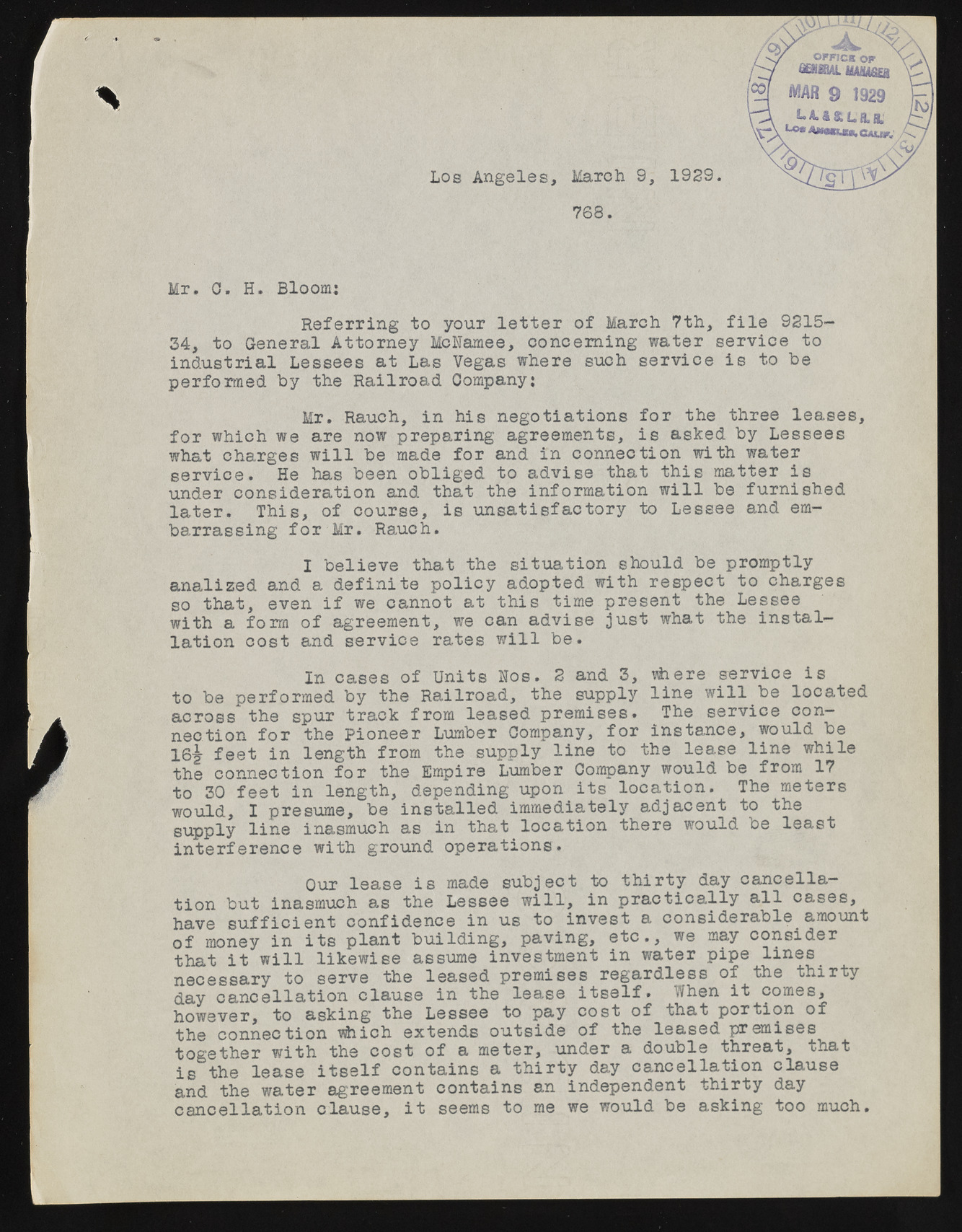Copyright & Fair-use Agreement
UNLV Special Collections provides copies of materials to facilitate private study, scholarship, or research. Material not in the public domain may be used according to fair use of copyrighted materials as defined by copyright law. Please cite us.
Please note that UNLV may not own the copyright to these materials and cannot provide permission to publish or distribute materials when UNLV is not the copyright holder. The user is solely responsible for determining the copyright status of materials and obtaining permission to use material from the copyright holder and for determining whether any permissions relating to any other rights are necessary for the intended use, and for obtaining all required permissions beyond that allowed by fair use.
Read more about our reproduction and use policy.
I agree.Information
Digital ID
Permalink
More Info
Rights
Digital Provenance
Publisher
Transcription
Los Angeles, March 9, 1929. 768. \v; Mr. 0. H. Bloom: Referring to your letter of March 7th, file 9215- 34, to General Attorney McNamee, concerning water service to industrial Lessees at Las Vegas where such service is to be performed by the Railroad Company: Mr. Rauch, in his negotiations for the three leases, for which we are now preparing agreements, is asked by Lessees what charges will be made for and in connection with water service. He has been obliged to advise that this matter is under consideration and that the information will be furnished later. This, of course, is unsatisfactory to Lessee and embarrassing for Mr. Rauch. I believe that the situation should be promptly analized and a definite policy adopted with respect to charges so that, even if we cannot at this time present the Lessee with a form of agreement, we can advise just what the installation cost and service rates will be. In cases of Units Nos. 2 and 3, where service is to be performed by the Railroad, the supply line will be located across the spur track from leased premises. The service connection for the Pioneer Lumber Company, for instance, would be 16^- feet in length from the supply line to the lease line while the connection for the Empire Lumber Company would be from 17 to 30 feet in length, depending upon its location. The meters would, I presume, be installed immediately adjacent to the supply line inasmuch as in that location there would be least interference with ground operations. Our lease is made subject to thirty day cancellation but inasmuch as the Lessee will, in practically all cases, have sufficient confidence in us to invest a considerable amount of money in its plant building, paving, etc., we may consider that it will likewise assume investment in water pipe lines necessary to serve the leased premises regardless of the thirty day cancellation clause in the lease itself. When it comes, however, to asking the Lessee to pay cost of that portion of the connection which extends outside of the leased prarises together with the cost of a meter, under a double threat, that is the lease itself contains a thirty day cancellation clause and the water agreement contains an independent thirty day cancellation clause, it seems to me we would be asking too much.

